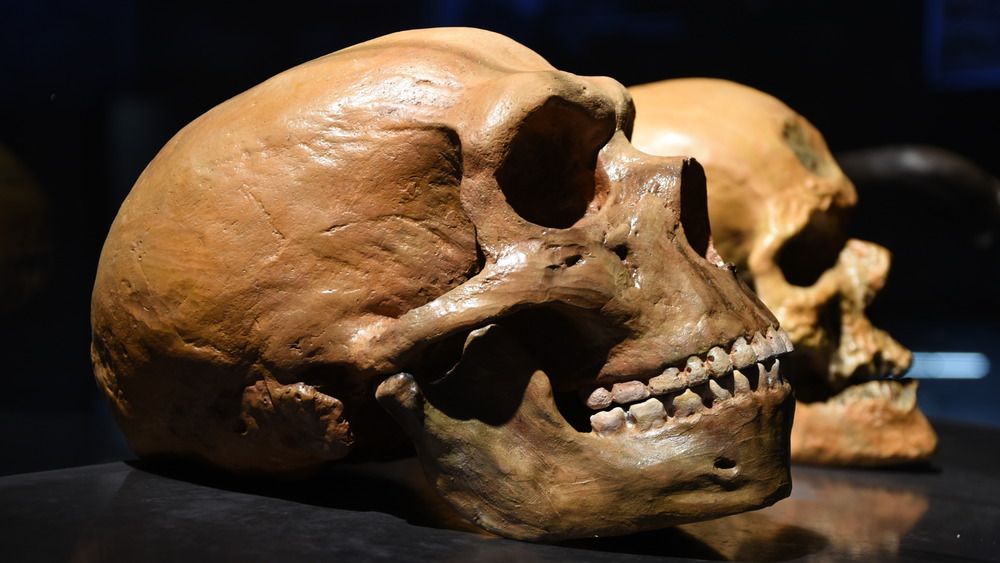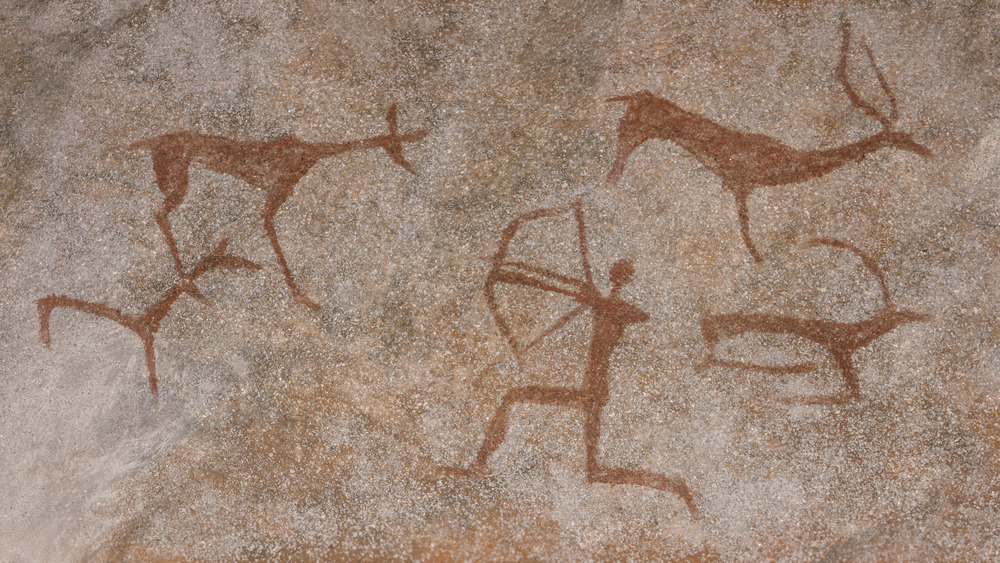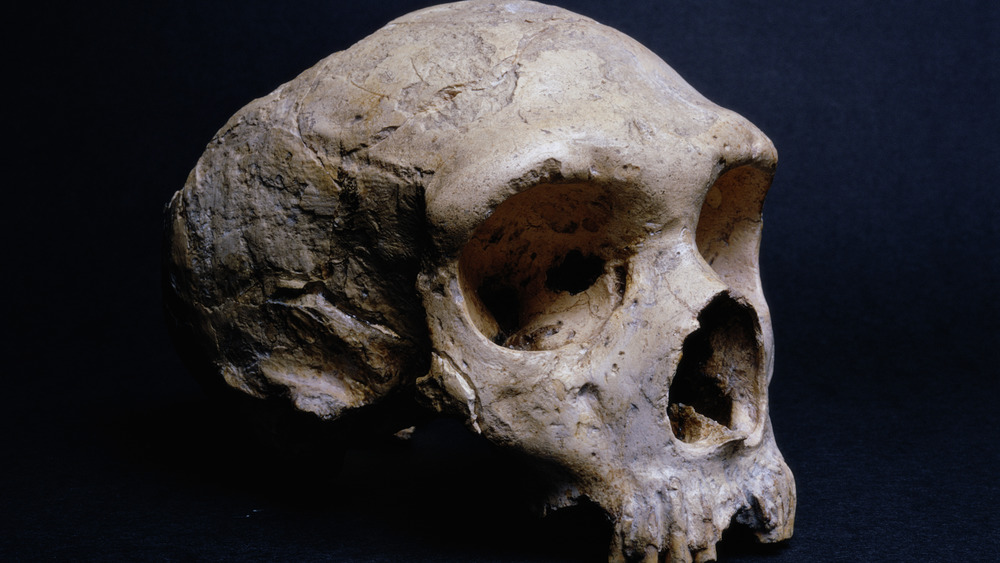This Was The Unluckiest Neanderthal In History
Life must've been difficult for the early humans who walked the Earth 100,000 years ago. Living in the Pleistocene epoch, commonly referred to as the Ice Age, posed challenges we, as modern-day humans, couldn't begin to imagine. For our early cousins, the Neanderthals, the times were even rougher. See, Homo sapiens were still mostly concentrated in Africa around that time, with only a few adventurous individuals leaving the continent in search of greener pastures, according to Khan Academy. Neanderthals, on the other hand, were spread between Europe and central Asia, and the climates there were beyond harsh.
The world of the Neanderthals was a cold, near-endless winter. Ice sheets coated much of the northern world. Agriculture was still thousands of generations beyond the horizon, modern medicine and cities even more so, and, of course, the beasts were giants. Woolly rhinos, mastodons, and other herculean fauna were dangerous, yet valuable, food sources to be taken down with spears or clubs. Cave bears, cave lions, and giant wolves were constantly threatening to make a meal out of the Neanderthal, but that certainly wasn't the only mode of death, as the unluckiest Neanderthal in history once found out. Some deaths, and this still holds true in the modern-day, are simply the result of an unfortunate circumstance.
A Neanderthal's stroke of bad luck
Imagine, if you will, being a typical Neanderthal man. According to The Natural History Museum, London, you're short, standing below 5'7". Your arms and legs aren't as long as your Homo sapiens cousin's, but, girl, you thicc. Your body is muscular and powerful. You're built not to run down your prey, but to ambush it and take it down in close combat. To modern humans, you'd be a pretty funny looking person. Sorry, but it's true. Your face protrudes outward, you'd have a large brow and squat skull cap, and you'd be pretty much absent chin, but you have large, goofy front teeth to make up for it. So, you've got that going for your Neanderthal self.
There you are, in all your awkward Neanderthal glory, walking through what would later be southern Italy, looking for food, a mate, or maybe you're walking off the silly feeling from those mushrooms you found in that field. Then — BAM! — you fall. Had you been looking down, you may have noticed the sinkhole you were about to walk into, but you didn't. Now, you're stuck. You're shouting or grunting for help, but, according to Discovery, scientists haven't yet proven if you can or cannot speak, so who knows if anyone could understand your pleas. Regardless, you remained in that sinkhole, the days passing by while you anxiously starved to death. And, like the unluckiest Neanderthal in history, your body would remain there for tens of thousands of years.
What's unlucky for one is lucky for another
The unluckiest Neanderthal in history would turn out to be one of the luckiest discoveries for those who study pre-humans. The Neanderthal's remains were discovered back in 1993 inside of a limestone cave in southern Italy, according to NBC. There are several things that are special about this particular specimen, besides the whole bad luck thing. For one, the skeleton has been preserved better than most thanks to the way the stone was formed in the cave. Water and minerals dripping down the sinkhole led to the formation of calcite, which encased the Neanderthal's remains and left them in beautiful condition. Of course, the remains are encased in stone and not very easy to get to without causing extensive damage, but scientists were still able to take samples from the bones.
According to IFLScience, the remains provided samples of DNA that date the skeleton to between roughly 130 and 170 million years ago, making it the oldest known Neanderthal specimen in the world. And these samples could one day provide clues that give us a clearer picture of the human evolutionary tree, but it might take us a while. DNA doesn't hold up well to the test of time, and the samples from this specimen are degraded enough that our current sequencing methods can't put them back together. Luckily, some scientists believe that emerging genetic technology will be able to put the pieces of this puzzle in their rightful spots.


